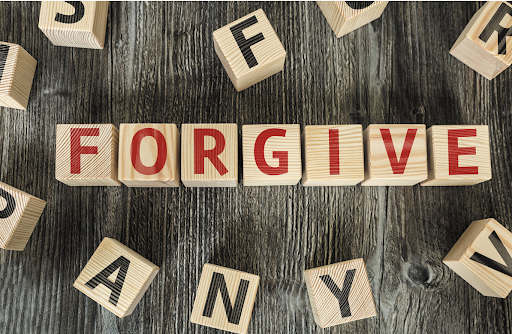Forgiveness is a concept that is often talked about, but it can be difficult to fully understand and practice. At its core, forgiveness is the act of letting go of resentment or anger towards someone who has wronged you. It is a way to move forward and let go of negative feelings, rather than holding onto them and letting them consume you.
So, what is forgiveness?
Contrary to popular opinion, forgiveness is not about forgetting what happened or condoning the behavior of the person who wronged you. It is about acknowledging the harm that was done and choosing to let go of the negative feelings that come with it. This can be a difficult and painful process, but it is one that is necessary for healing and personal growth. Forgiveness allows for us to amend a relationship that has been damaged and is a process that can happen at any time whether the person is still in our life or not.
Benefits
While forgiveness may be difficult, it is important to practice forgiveness and try to incorporate it into your life. Being able to forgive can lead to healthier relationships, less anxiety, lower blood pressure, and fewer symptoms of depression.
Phases
There are 4 phases to working towards forgiveness.
Phase one
The first phase is the “uncovering” phase. This phase allows you to understand the injustice and how it has impacted you. Take a second to think about the situation. What happened? What emotions did you experience and the emotions you are experiencing while thinking about it? Name those feelings and understand how these impacted you.
Phase two
The second phase is the “decision” phase. This phase is important for understanding what forgiveness is in a deeper manner related to what happened and those emotions have/are experiencing. Take a moment to think about what forgiveness means to you and how you define forgiveness. What does forgiveness look like? This phase is also where you get to make a decision to choose or reject forgiveness. Make a list of pros and cons to help you decide if you should forgive the person who wronged you. Then, think about how forgiveness might make things different for you and your life.
Phase three
The third phase is the “work” phase and might be the most difficult. Start thinking about the person who wronged you in a different way. Allow yourself to have some positive feelings about that person and yourself because learning to see that person in a different light is an important step in forgiveness. Put yourself in the wrong-doers shoes for a second and think about what their life has been like, what difficulties they may have experienced, and maybe what they were going through mentally, physically, and emotionally at the time of the wrongdoing. Remember, this is thinking of what the person might have been going through, not excusing the behavior.
Phase four
This is the “deepening” phase. We want to work on continuing to decrease the negative emotions we have toward the wrongdoer. Think about how you will benefit from forgiving the wrongdoer. Think about the impact this will have on you mentally, physically, and emotionally to forgive the wrongdoer. Finally, after considering your emotions and feelings, the other person’s feeling and emotions, decide if you want to forgive the other person, and make this decision for yourself. Forgiving someone is for you, not for them.
Review
Ultimately, forgiveness is a personal choice. It is not something that you have to do, but it can be a powerful tool for healing and personal growth. By letting go of resentment and anger, you can free yourself from the burden of negative emotions and move forward in a more positive direction.
More about the author: About Therapist Bethany Winter, MA, LPC Barnum Counseling
- (2012). Therapy worksheets, tools, and handouts. Therapist Aid. Retrieved December 23, 2022, from https://www.therapistaid.com/
Image: © gustavofrazao/Getty Images
